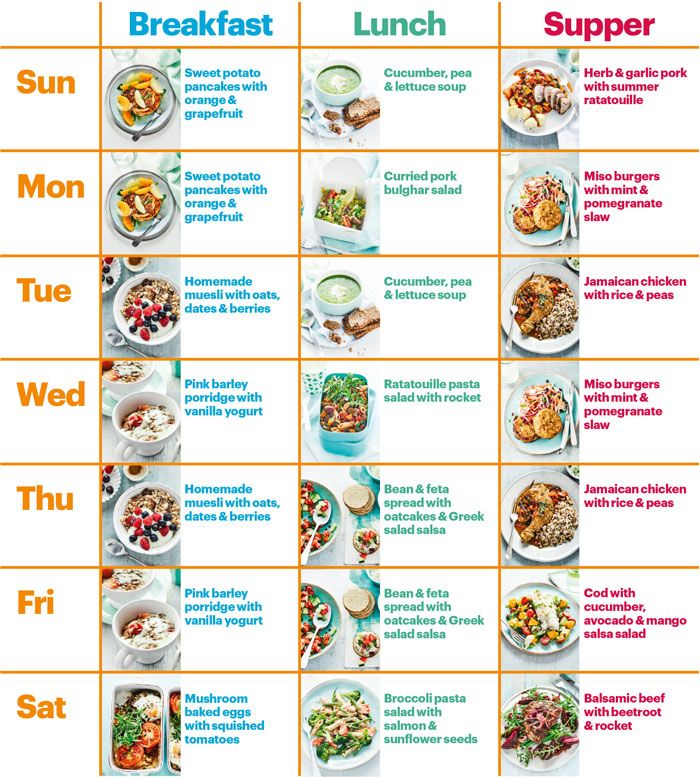
First, you should know that nutrition facts are required for many packaged foods in many countries. The nutritional facts label lists all nutrients and other ingredients found in a food. Based on official nutritional rating systems, the nutrition facts label lists the nutrients in a food. Many countries also publish an overall nutrition guide. This information is crucial for making informed choices about what foods to eat. You should be aware of the nutritional facts to ensure your family's well-being.
Attention should be paid to the nutrient levels of foods. You can find the nutrition facts label on each product to see the exact amount. Pay close attention to the labels for dairy products if your goal is to lose weight. A 'light label' is a label that indicates foods that have less sugar than standard versions. These labels are vital for those who are conscious about sugar and watching what they eat.

The list of ingredient is the most important element of the nutrition info panel. It will indicate whether a product contains sugar, sodium, preservatives or both. It will also tell you about the shelf life of the product, the ingredients, and how long it's been sitting on the shelf. The ingredients will also be listed. These items should be labeled so that you are safe.
The labels include all ingredients in the nutrition information. Noting that compounds are also included on the labels is important. A chocolate chip ice cream, for example, contains cocoa, sugar, and chocolate. These ingredients are not required to be listed if they comprise less than 5%. Compound ingredients that make up less then 5% of a food product are not allowed to be listed.
Healthy eating starts with nutrition information. You should see the label to find out how many calories, fat, sugar, salt, and other nutritional information. These percentages refer to the recommended daily intakes (for women) and are based off a 2000-calorie diet. It is important that you check the nutrition labels of any food if you have a special diet. A label's nutritional information will help you make the best choices for yourself and your family.

The nutrition information for a food label is the product's nutritional information. This information helps you control your calorie intake. The label should contain the nutritional information. A meal with too many ingredients will make you more likely to be obese or overweight. A low-calorie meal is an example. This will allow you to eat a healthy diet, and help keep your body in top shape.
FAQ
How much should you weigh for your height and age BMI chart & calculator
Use a BMI calculator to determine how much weight is needed to lose. The healthy BMI range for a healthy person is 18.5 to 24.9. Aim to lose 10 pounds per month if your goal is to lose weight. Enter your height in the BMI calculator.
This BMI chart can help you find out if or not you are obese.
What is the problem with BMI?
BMI stands to Body Mass Index. It is a measurement of body weight based on height. BMI is calculated using the following formula:
Add weight in kilograms to height in meters squared.
The result can be expressed as a number between zero and 25. Scores between 0 and 25 indicate obesity. A score of 18.5 indicates overweight. A score of 23 indicates obesity.
A person who weighs 100 kg and has a height of 1.75 m will have a BMI of 22.
How often should I exercise?
For a healthy lifestyle, exercise is vital. You don't have to exercise for a certain amount of time. Finding something you enjoy is key. Stick with it.
When you exercise three times per week, aim for 20-30 minutes moderate intensity. Moderate intensity will mean that you'll continue to be exerting yourself afterward. This type workout burns about 300 calories.
You can walk for 10 minutes every day if that is what you prefer. Walking is easy on the joints and has low impact.
Jogging is an alternative to running. You can do it for as little as 15 minutes each day. Running is a great way of burning calories and building muscle tone.
You can start slow if you're new to exercise. Begin by only doing 5 minutes of cardio five times per week. Gradually increase the time you do cardio until your goal is reached.
How does weight change with age?
How do you determine if your bodyweight is changing?
If there are less calories than muscle mass, then weight loss is possible. This means that calories must be consumed at a rate greater than energy. Reduced activity is the leading cause of weight gain. Other causes include illness, stress, pregnancy, hormonal imbalances, certain medications, and poor eating habits. If there is more body fat than muscle mass, then weight gain can occur. This happens when people consume more calories than they burn during the day. Common reasons include overeating, increased physical activity, and hormonal changes.
The primary reason we lose weight is that we consume less calories than what we burn. By exercising regularly, our metabolism rates increase which in turn burns more calories during the day. But this doesn't guarantee that we'll lose weight. All that matters is whether we're losing weight or gaining muscles. Weight loss is possible if you burn more calories than you consume. But, if we consume far more calories than what we burn, then we actually store them as fat.
As we get older, our movement speed slows down and so we move less. We also tend to eat less food than we did when we were younger. This is why we tend to gain weight. However, our muscle mass is more important than we realize and makes us appear larger.
It's not possible to measure how much weight your body has lost without weighing yourself every week. There are many methods to measure your weight. You can gauge your waist size, hips, hips, thighs and arms. Some people prefer to use a bathroom scale while others prefer to measure with tape.
You can track your progress by weighing yourself at least once per week and measuring your waistline every month. To track your progress, you can also take photos every few months of yourself to see how far it has come.
Online, you can find out your height and weight. If you're tall at 5'10", and weigh 180lbs, your weight would be 180.
How can I live my best life everyday?
It is important to identify what makes you happy. Once you are clear about what makes you happy and satisfied, you can move on to the next step. You can also ask others how they live their best lives everyday.
You can also find books such as "How to Live Your Best Life" written by Dr. Wayne Dyer. He talks about finding happiness and fulfillment in all aspects of our lives.
Statistics
- According to the Physical Activity Guidelines for Americans, we should strive for at least 150 minutes of moderate intensity activity each week (54Trusted Source Smoking, harmful use of drugs, and alcohol abuse can all seriously negatively affect your health. (healthline.com)
- In both adults and children, the intake of free sugars should be reduced to less than 10% of total energy intake. (who.int)
- nutrients.[17]X Research sourceWhole grains to try include: 100% whole wheat pasta and bread, brown rice, whole grain oats, farro, millet, quinoa, and barley. (wikihow.com)
- WHO recommends reducing saturated fats to less than 10% of total energy intake; reducing trans-fats to less than 1% of total energy intake; and replacing both saturated fats and trans-fats to unsaturated fats. (who.int)
External Links
How To
What does the word "vitamin" mean?
Vitamins can be described as organic compounds found in food. Vitamins are essential for our bodies to absorb nutrients from the foods we eat. Vitamins cannot be produced by the body. They must be acquired from food.
There are two types if vitamins: water soluble, and fat soluble. Water soluble vitamins dissolve easily in water. Some examples include vitamin C,B1 and B2 vitamins (thiamine), B2 and riboflavin, B3 and B6 vitamins (niacin), folic acids, biotin, pantothenic acids, and cholesterol. Fat soluble vitamins are stored in the liver and fatty tissue. You can find vitamin D, E K, A, beta carotene, and other fat-soluble vitamins.
Vitamins can be classified according to biological activity. There are eight major categories of vitamins.
-
A - vital for healthy growth.
-
C - important for proper nerve function and energy production.
-
D - essential for healthy bones, teeth, and gums.
-
E - Required for good vision & reproduction
-
K - essential for healthy muscles, nerves, and bones.
-
P - essential for strong bones, teeth and tendons
-
Q - Aids digestion and iron absorption
-
R - Red blood cells are made from red blood cells.
The recommended daily allowance (RDA) of vitamins varies depending on age, gender, and physical condition. The U.S. Food and Drug Administration, (FDA), sets the RDA value.
For example, the RDA for vitamin A is 400 micrograms per dayfor adults 19 years or older. However, pregnant women need 600 micrograms per day because it is important for fetal development. Children ages 1-8 require 900 micrograms per day. Infants below one year old require 700mg per day. But, between 9 months to 12 months, the amount drops to 500mg per day.
Children between the ages 1--18 years old who are overweight or obese require 800 micrograms per Day, while those who are overweight or obese need 1000 micrograms. To meet their nutritional needs, children underweight and obese require 1200 micrograms a day.
Children aged 4-8 years old who have been diagnosed as having anemia require 2200 micrograms of vitamin C per day.
2000 micrograms per person is necessary for general health. Because of their higher nutrient needs, women who are pregnant or nursing need 3000 mg per day.
1500 micrograms is the recommended daily intake for adults aged 70+, who lose approximately 10% of muscle each year.
Women who have been pregnant or are lactating require more than the RDA. Pregnant women need 4000 micrograms per dayduring pregnancy and 2500 micrograms per day after delivery. Breastfeeding mothers need 5000 micrograms per day when breast milk is being produced.